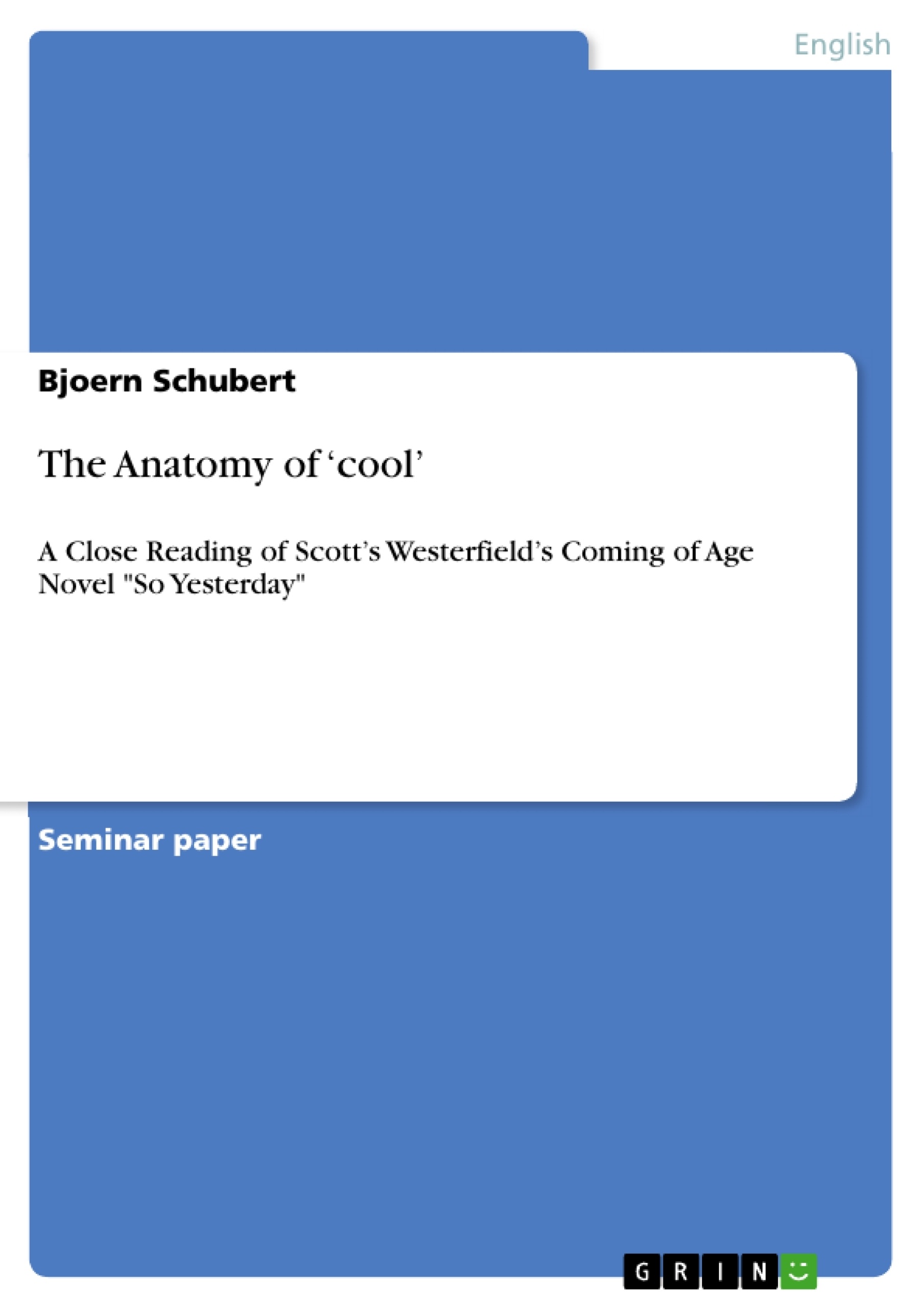21st Century American Adolescents are no longer able to rebel against traditional Authorities such as Family and State. If at all, they can merely rebel against American Consumer Culture as such, which has long turned the Act of Youth Rebellion itself into Manifold Branded Lifestyles with certain Class Distinctions.
Inhaltsverzeichnis (Table of Contents)
- The Code of Cool in the Communication of Youth Cultures - The Pyramid of Cool in So Yesterday
- The Cultural Capital of Cool in Trend-Scouting
- The Role of Pictures and Simulacra for Post-Modern Reality Perception and in Social Networks: The Construction of Visual 'Coolness' as means of Identification
- Self-branding and Viral Marketing as an Attempt of Reinventing Identities
- Deconstructing Cool and Possible Attempts to Reclaim Authentic Identities in a Post-Modern World
Zielsetzung und Themenschwerpunkte (Objectives and Key Themes)
This paper examines the concept of "cool" in contemporary American adolescent culture, specifically within the context of Scott Westerfield's novel So Yesterday. It aims to analyze how the original notion of cool has been commodified and integrated into consumer culture, focusing on the ways in which Westerfield explores this phenomenon through the novel's narrative and character development.
- The commodification of cool and its influence on youth culture.
- The role of consumer culture and media in shaping perceptions of cool.
- The relationship between cool, identity, and social belonging.
- The portrayal of generational conflict and the quest for identity.
- The use of terminology from critical cultural and media theory in adolescent literature.
Zusammenfassung der Kapitel (Chapter Summaries)
The paper begins by exploring the evolution of the concept of cool, tracing its origins from the 1950s to the present day. It examines how cool has transitioned from a symbol of rebellion to a marketed commodity. The paper then analyzes the "pyramid of cool," a social hierarchy presented in So Yesterday that depicts the different stages of cool, from innovators to laggards. The paper explores the dynamics of this pyramid, focusing on the roles of trendsetters and consumers in the spread of cool.
Schlüsselwörter (Keywords)
This paper focuses on the concepts of cool, youth culture, consumer culture, media, identity, social belonging, trendsetting, and postmodernism. It examines the commodification of cool, its impact on social networks, and its implications for constructing and reclaiming authentic identities.
- Citation du texte
- Bjoern Schubert (Auteur), 2009, The Anatomy of ‘cool’, Munich, GRIN Verlag, https://www.grin.com/document/175226



